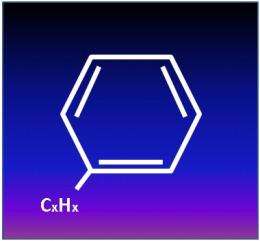Controlling catalysts: Expert discusses new ways to drive old reactions

Like chefs in a culinary competition, catalysts must avoid distractions to quickly turn feedstock into desired products. At the University of Virginia, Professor T. Brent Gunnoe and his team are designing catalysts to do just that: convert fossil feedstock into alkyl arenes that are precursors for polymers, soaps, and detergents.
The challenges and results of the team's work were presented at the Pacific Northwest National Laboratory's Frontiers in Catalysis Science and Engineering Seminar Series, where experts discuss novel ideas and scientific advances.
Gunnoe and his team create catalysts that control reactions at the molecular scale, turning on and off different products and pathways. The reactions they target, known as olefin hydroarylation, produce an alkylated aromatic ring. Although catalytic routes to these compounds are known, developing more selective, versatile, and environmentally benign methods could be a substantial advancement for the chemical industry.
"We need to create these chemicals by using more environmentally friendly, more selective and less expensive processes that make the best use of the fossil resources, converting as much of the feedstock as possible," said Gunnoe.
A tale of two reactions. Billions of pounds of alkyl arenes are made each year, but the traditional methods suffer from drawbacks, including large waste volumes and poor control over desired products compared to byproducts. The hydroarylation reaction that has been historically used by industry, and that is still used for several processes, known as the Friedel-Crafts reaction, was developed in 1877. Despite important advancements in this field during the past 20 years, substantial challenges remain.
Gunnoe and his group are striving to replace current systems with more efficient and selective catalysts; their current efforts are examining ruthenium- and platinum-centered catalysts. These catalysts have specifically tailored ligands. Based on experimental and computational tests, the team found that the size and electron density of the ligands strongly influence the reaction's direction. Based on what has been learned to date, they are working on increasing the longevity and selectivity of several promising versions of their initial catalyst systems.
Moving into nano. The work presented by Gunnoe beautifully demonstrated the control of catalytic processes offered by molecular catalysts. "How to use principles from molecular catalysts to make nanostructured catalyst materials that exert the same control is a big challenge for the future," said Dr. Bruce Garrett, who directs PNNL's Chemical & Materials Sciences Division.
Provided by Pacific Northwest National Laboratory

















